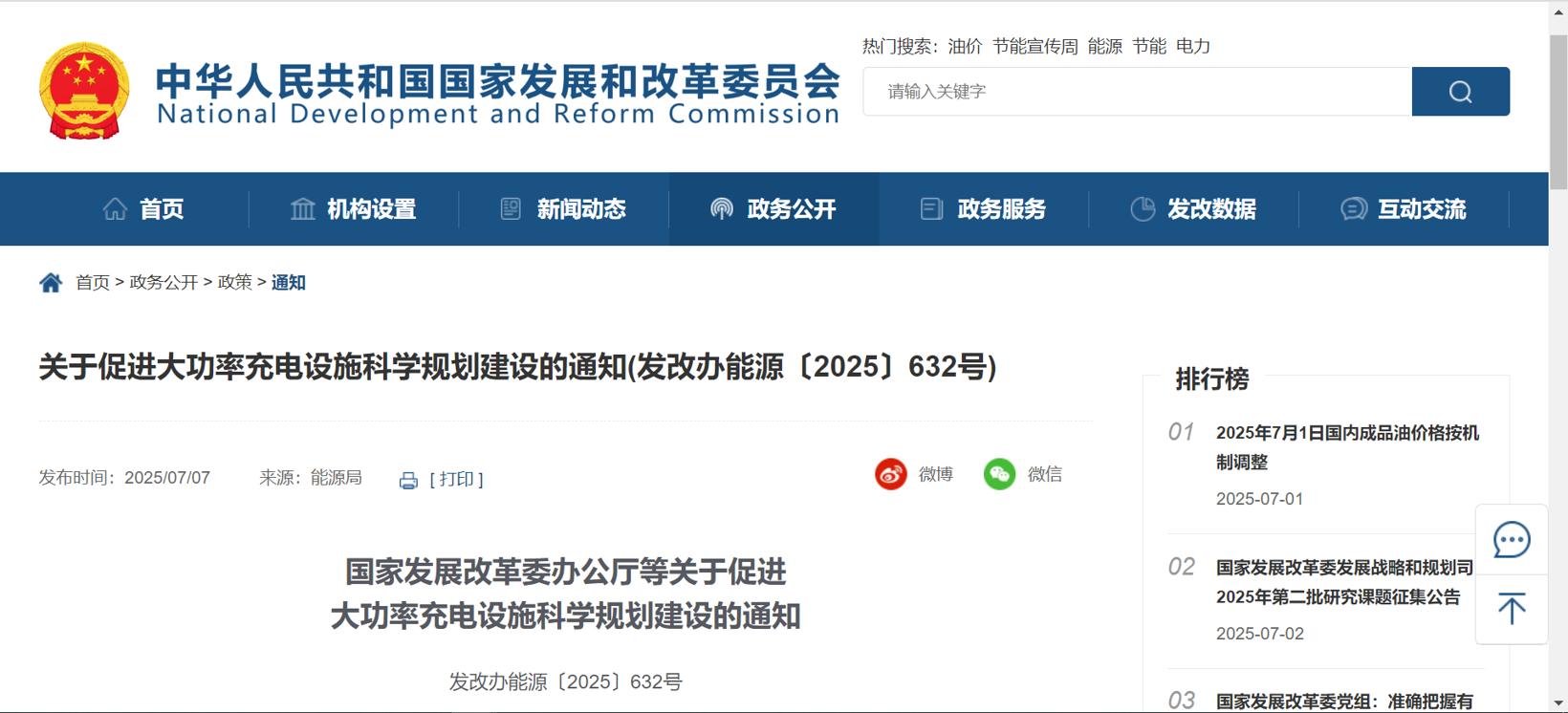On July 7, the National Development and Reform Commission and three other departments released a notice titled 'Notice on Promoting the Scientific Planning and Construction of High-Power Charging Facilities.' The notice emphasizes the need for coordinated planning of high-power charging facilities, focusing on local economic development levels, the promotion of electric vehicles, and the distribution of power resources. It calls for a practical and reasonable layout of charging facilities, prioritizing scenarios that allow for immediate charging and departure. Provincial departments responsible for charging facility development should work with other related departments to set reasonable development goals and construction tasks for high-power charging facilities within charging network planning. They are to create special plans for high-power charging facilities as needed, with a focus on construction plans in highway service areas, particularly for charging facilities that exceed a 40% utilization rate during major holidays. The planning process should follow market regulations, conduct predictive assessments, and align with land use planning, distribution network planning, and transportation planning to achieve coordinated development of high-power charging networks with existing charging facilities. By the end of 2027, the goal is to have over 100,000 high-power charging facilities nationwide, with upgraded service quality and technological applications. The notice also states that the orderly construction of these facilities should be guided, with project construction units adhering to legal procedures for project filings. Local departments overseeing charging facility development should strengthen regulation of high-power charging facility projects to prevent resource wastage and disorderly construction. The government is expected to play a guiding role, promoting the efficient use of resources and supporting quality operators with good investment capabilities and operational experience in building, renovating, and operating these stations. There will be an active layout of dedicated high-power charging facilities for public transport, logistics, and medium to heavy-duty freight. High-power charging networks built by new energy vehicle companies should generally be open without discrimination. Furthermore, the notice encourages the integration of charging stations with dining, entertainment, shopping, and automotive services to enhance the charging service experience. Additionally, the notice stresses the importance of safety management for high-power charging facilities. Departments responsible for charging facility development must strictly enforce safety regulations and oversee the design, construction, and supervision of public charging stations to ensure safety management responsibilities are fulfilled. Charging construction and operation companies must comply with national standards for site selection, design, construction, and fire safety arrangements for high-power charging stations. They should also strengthen equipment procurement management, verifying the compliance of charging piles and associated equipment with quality standards.
China Issues Guidelines for the Development of High-Power Charging Infrastructure

Share this post on: